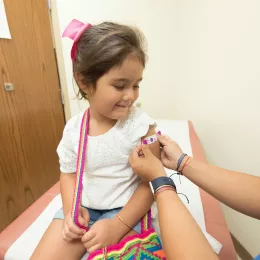Peter's Memo: Keep McDonald’s out of the classroom

The coronavirus thoroughly upended school as we knew it.
A year ago, homes replaced school buildings, dining room tables replaced desks, and teachers (as they always do!) rose to the occasion.
Food companies, sadly, were already well positioned to profit from the move to online.
How?
Students gain access to their virtual classrooms via platforms—websites and apps like ABCya—on school-issued laptops and other devices.
But many of those platforms—roughly 60 percent, by one analysis done in June—either contain ads or have unclear advertising policies.
And many of the ads are troubling.
The last thing we need is a pitch for Happy Meals in the panel next to a lesson on Ancient Egypt, or Tony the Tiger carrying on right beside a math game.
Kids are uniquely vulnerable to marketing because they don’t understand advertising’s intent...or the impact of food on their health.
That’s why the Center for Science in the Public Interest, Nutrition Action’s publisher, and our partner organizations are working to get Madison Avenue out of what are essentially today’s textbooks.
Last June, for example, we convinced McDonald’s, Kraft Heinz, and Kellogg to pull their ads from some online platforms through the end of 2020.
We also persuaded the Children’s Food and Beverage Advertising Initiative—the industry’s self-regulatory body—to ask its 19 member companies to drop their online-platform ads.
Those are good first steps, but the commitments are voluntary, and we don’t know for how long the companies will abide by them.
It’s the U.S. Department of Agriculture that needs to do more to protect our children. The USDA already limits junk food advertising on school grounds. The same should apply to the new school grounds: school-issued computers and online resources for students.
Learning about history can be fun, but Lincoln and Lunchables on the same screen just isn’t right.
CSPI will continue to fight to make sure that our schools—whether online or in-person—are permanently free of junk-food advertising.
As it is, we and our children are surrounded 24/7 by marketing for unhealthy foods— in shopping malls, drug stores, gas stations, convenience stores, and movie theaters, on TV, and elsewhere. The least we can expect is that advertising for junk food stops at the school door, whether real or virtual.
You can help by signing our petition urging the USDA to limit those junk food ads at cspinet.org/educationplatforms.
Thank you.
Peter G. Lurie, MD, MPH
President, Center for Science in the Public Interest
Topics
The Latest by Peter
Makary must stop the bleeding if confirmed to lead FDA
Government Accountability

Peter’s Memo: Goodbye Red 3, hello better labels
Advocacy

Mass layoffs at FDA will not make Americans healthier
Government Accountability

Trump administration firing of thousands of health agency employees will undermine food safety
Government Accountability

Stop the outbreaks of tomorrow by voting against Kennedy on Senate floor
Government Accountability


